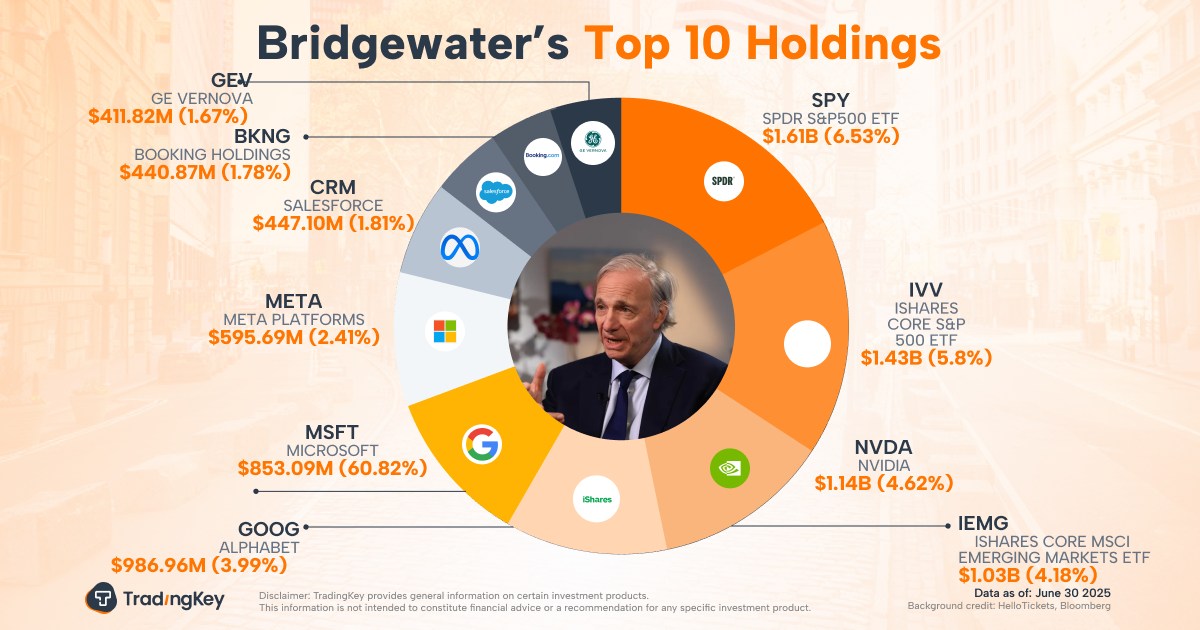Bitcoin Soars Past $124k, a New All-Time High. 4 Tailwinds Behind the Momentum.

Key Points
Bitcoin just hit a new all-time high.
It's probably going to keep climbing.
There are four trends that make higher prices quite likely from here.
Markets reward scarcity, and today the world's biggest cryptocurrency just reminded everyone why that principle still rules.
On Aug. 13, Bitcoin (CRYPTO: BTC) traded above $124,000, surpassing its prior record. Four tailwinds are driving this move, and they're all going to stay in play for a while, so let's examine each and understand them.
Where to invest $1,000 right now? Our analyst team just revealed what they believe are the 10 best stocks to buy right now. Learn More »

Image source: Getty Images.
1. Post-halving scarcity is biting
Bitcoin's fourth halving in April 2024 cut the mining reward to 3.125 coins per block, reducing net new issuance to roughly 450 bitcoins per day. That means less fresh supply is meeting the market. And, fortunately for holders, the supply crunch is taking root just as buyers are looking to make large purchases.
In particular, U.S. spot exchange-traded funds (ETFs), which hold the coin on behalf of their shareholders, have become persistent buyers. The iShares Bitcoin Trust ETF showed nearly $89 billion in net assets as of Aug. 12, a live proxy for the substantial coin balances held off the market. Persistent inflows across the ETF landscape have repeatedly tightened Bitcoin's floating supply available for public trading.
The result is more price sensitivity to each marginal dollar of demand. And, there are new players arriving to the market with plenty of demand.
2. Corporations, financial institutions, and treasuries are accumulating it
The ownership base of Bitcoin is tilting toward entities that tend to buy and hold, which is another major tailwind.
As of Aug. 13, there were roughly 1.5 million bitcoins held in ETFs, 935,498 held by public companies, and 517,296 attributed to countries, together representing more than 14% of Bitcoin's supply cap of 21 million.
One type of holder stands out. Corporate accumulation is a major driver of the coin's price this year, as companies seek liquidity, collateral value, and brand alignment with a finite asset.
When those long-term owners buy coins, turnover declines, and prices tend to grind higher over time.
3. Regulatory clarity and policy support are improving rapidly
The third tailwind is regulatory clarity.
The U.S. Securities and Exchange Commission (SEC) approved spot Bitcoin exchange-traded products (ETPs) for listing and trading in early 2024, establishing a mainstream wrapper with daily liquidity and standard investor protections. Now, those ETPs are quite popular, and the SEC's ongoing rulemaking regarding crypto is helping to give big organizations the confidence they need to buy and hold it, too.
Abroad, the E.U.'s Markets in Crypto-Assets (MiCA) framework has been in force since the end of 2024, with transitional timelines for service providers to come into full compliance during 2025 and 2026, creating a single rulebook and clearer pathways for banks and fintechs in the region to participate.
Policy does not have to be perfect to be additive. It just has to be clear enough for institutional compliance teams to say yes, and Bitcoin is now past that hurdle in much of the world.
4. Crypto is now accepted across the investor spectrum
The final tailwind is that Bitcoin is now obviously at the tail-end of its acceptance as an asset.
Originally, owning Bitcoin meant wrestling with an awkward technical stack of wallets, keys, and exchanges. Explaining it to friends and relatives was more likely to be met with confusion or the stated conviction that it simply wouldn't ever be worth anything. Go back 13 or 14 years, and holding it often meant being considered to be a potential criminal, or worse, a nerd.
Today, there are ETFs in retail investors' brokerage accounts, model portfolios at all of the leading wealth platforms, and research roadmaps for financial institutions. Even public pensions and endowments are investing or thinking about it.
Everyone has heard of it, and many people own it. The frontier of awareness has been nearly fully tamed. That's going to ensure that a huge number of people keep up with this asset over time -- and that will almost certainly power it even higher over the long run.
Should you invest $1,000 in Bitcoin right now?
Before you buy stock in Bitcoin, consider this:
The Motley Fool Stock Advisor analyst team just identified what they believe are the 10 best stocks for investors to buy now… and Bitcoin wasn’t one of them. The 10 stocks that made the cut could produce monster returns in the coming years.
Consider when Netflix made this list on December 17, 2004... if you invested $1,000 at the time of our recommendation, you’d have $663,630!* Or when Nvidia made this list on April 15, 2005... if you invested $1,000 at the time of our recommendation, you’d have $1,115,695!*
Now, it’s worth noting Stock Advisor’s total average return is 1,071% — a market-crushing outperformance compared to 185% for the S&P 500. Don’t miss out on the latest top 10 list, available when you join Stock Advisor.
*Stock Advisor returns as of August 13, 2025
Alex Carchidi has positions in Bitcoin and iShares Bitcoin Trust. The Motley Fool has positions in and recommends Bitcoin. The Motley Fool has a disclosure policy.

.jpg)



